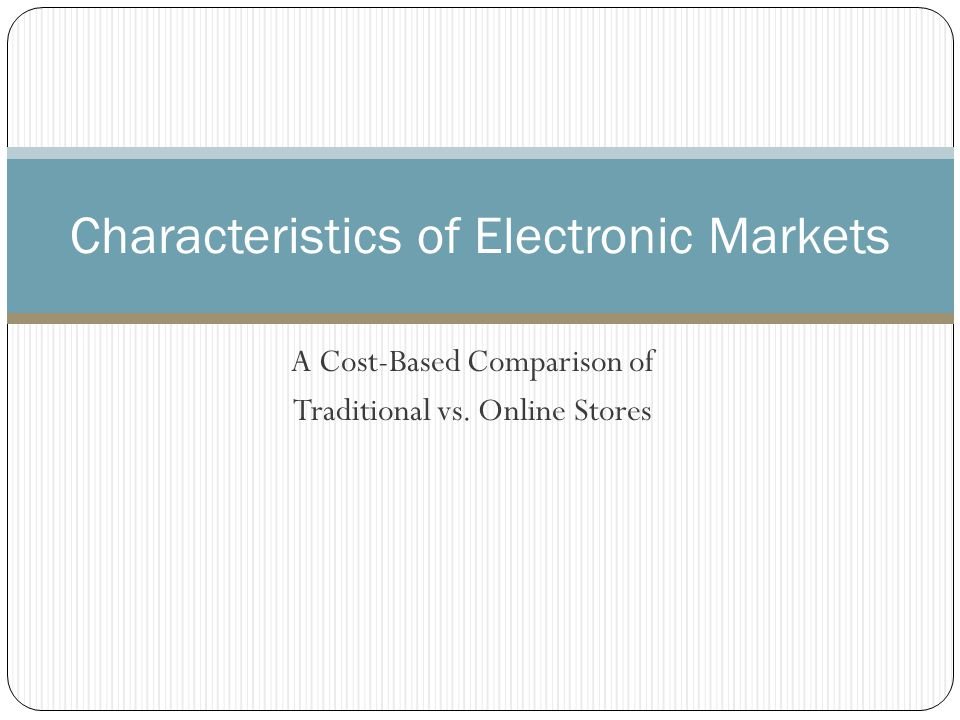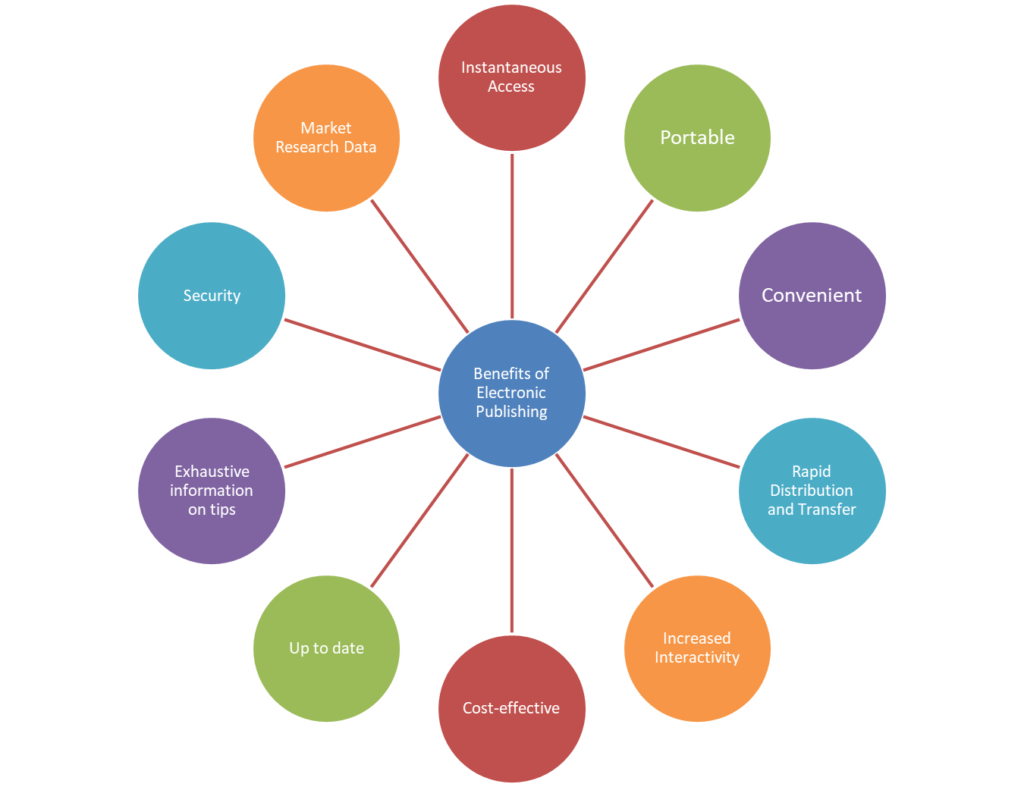Characteristics of Electronic Markets:- Electronic markets are most useful when they are able to directly match buyers and sellers. But, in oligopolistic situations, sellers may determine the success of e–markets in the industry if they want to maintain an environment of lower volume, higher profit margin transactions. Consumer characteristics.
Characteristic of Electronic Markets:-

- Cost reduction:-
Electronic markets reduce the cost of advertising price and product information to additional customers. They also reduce the cost of obtaining information on the price and products of alternative suppliers.
- Network externalities:-
The benefits for individual participants in electronic markets increase as more businesses join their information systems. Electronic markets with large number of buyers and sellers create more value for their participants, who are provided with a wider selection of potential suppliers and customers. There network externalities may also generate an early mover advantage because early movers have more time to attract buyers and seller.
- Switching costs:-
Electronic markets may require sizeable investment for their participants, for hardware, software, employee training and organizational transformations.
- Economies of scale and scope:-
Electronic markets typically require large capital investments and offer substantial economies of scale and scope. Initially large system development costs and incurred followed by the relatively small increments costs for additional transactions until the capacity of system is approached, resulting in substantial economies of scale.
- Technological uncertainty:-
Potential participants of electronic markets face substantial uncertainty regarding the actual benefits of joining such a system.
Barriers to Electronic Market Success:-

- Lack of IT infrastructure:-
The lack of infrastructure in India in a barrier to e-commerce participation by Companies and Consumers. In many areas, consumers do not have the same level of access to the Internet. This is a major barrier to electronic marker diffusion because even if consumers wish to participate in e-markets, they are physically unable to. Even if access is available, an additional barrier may be poor physical telecommunications.
- Computer illiteracy:-
The level of computer illiteracy associated with the consumers that have access to IT infrastructure is a barrier to e-market success. Because of a lock of education about computers, or a lack of willingness to accept new technology, a certain proportion of consumers are unable or unwilling to participate in electronic markets. As more and more children are introduced computers in school, the proportion of consumers who potentially may participate in electronics will increase in the future.
- Insufficient security:-
Insufficient data and message security inhibits some companies and consumers from participating in e-commerce. Confidence, reliability, and protection of information against security threats are the crucial prerequisites for the functioning of electronic commerce. Many initiatives are under way to improve security through improved data encryption and for e-commerce related information transfer improves, the expected level of e-market impact on industries, and the global economy will increase.
- Hierarchical transaction governance:-
Another barrier to e-market success is the fact that a significant portion of all transactions are not market transaction, but are hierarchical transactions. Hierarchical transaction governance is often associated with transactions involving high asset specificity. Asset specificity is the difference between the value of an asset in its present use and its next best use. Transactions involving high asset specificity will continue to be governed by hierarchies the firms involved generally need to maintain greater control over the transactions to minimize their overall risk.
Contributors to Electronic Market Success:-

- Product characteristics:-
First, the form of the product is important. Digiitizable products are particularly suited for electronic markets because they not only take advantage of the digitization of the market mechanism, but also the distribution mechanism, resulting in very low transaction costs.
Second, the magnitude of the product price may be an important determinant. Higher the product price, greater is the level of risk involved in the market transaction between buyers and sellers who are geographically separated and may have never dealt with each other before.
Some of the most common items currently sold through e-markets are low priced items such as CDs and book.
- Industry characteristics:-
An industry factor that affects the impact of e-markets is the level of standards that exist in an industry for describing products. Availability of standards that both the buyer and seller recognize contributes to enhancing the sales electronically.
A second industry characteristic is the need for a transaction broker. Electronic markets are most useful when they are able to directly match buyers and sellers. Industries that require transaction brokers may be affected less by electronic markets than are industries where no brokers are required.
- Seller Characteristics:-
E-markets reduce the search costs and enable the consumers to find sellers offering lower prices. In the long run, this reduces profit margins for sellers that compete in e-markets. It may also increase the number of transactions that take place.
If sellers in an industry are unwilling to participate in this environment, than the impact of e-markets may be reduced. In highly competitive industries, with low barriers to entry, sellers may not have a choice. But, in oligopolistic situations, sellers may determine the success of e-markets in an industry if they want to maintain an environment of lower volume, higher profit margin transactions.
- Consumer characteristics:-
Consumers can be classified as either impulse, patient or analytical. Impulse buyers purchase quickly with little analysis, patient buyer purchase products after making some comparisons, and analytical buyers do substantial research before making the decision to purchase products or services.
Electronic market may have litter impact on industries where a sizable percentage of purchases are made by impulse buyers. For example: grocery store purchased. Because electronic markets require a certain degree of effort on the part of the consumer, these markets are more conductive to consumers who do some comparisons and analysis before (the patient or analytical buyers).
More the industry features associated with higher e-market impact, greater will be the expected impact of e-markets on that industry.
What do you mean by e-commerce?